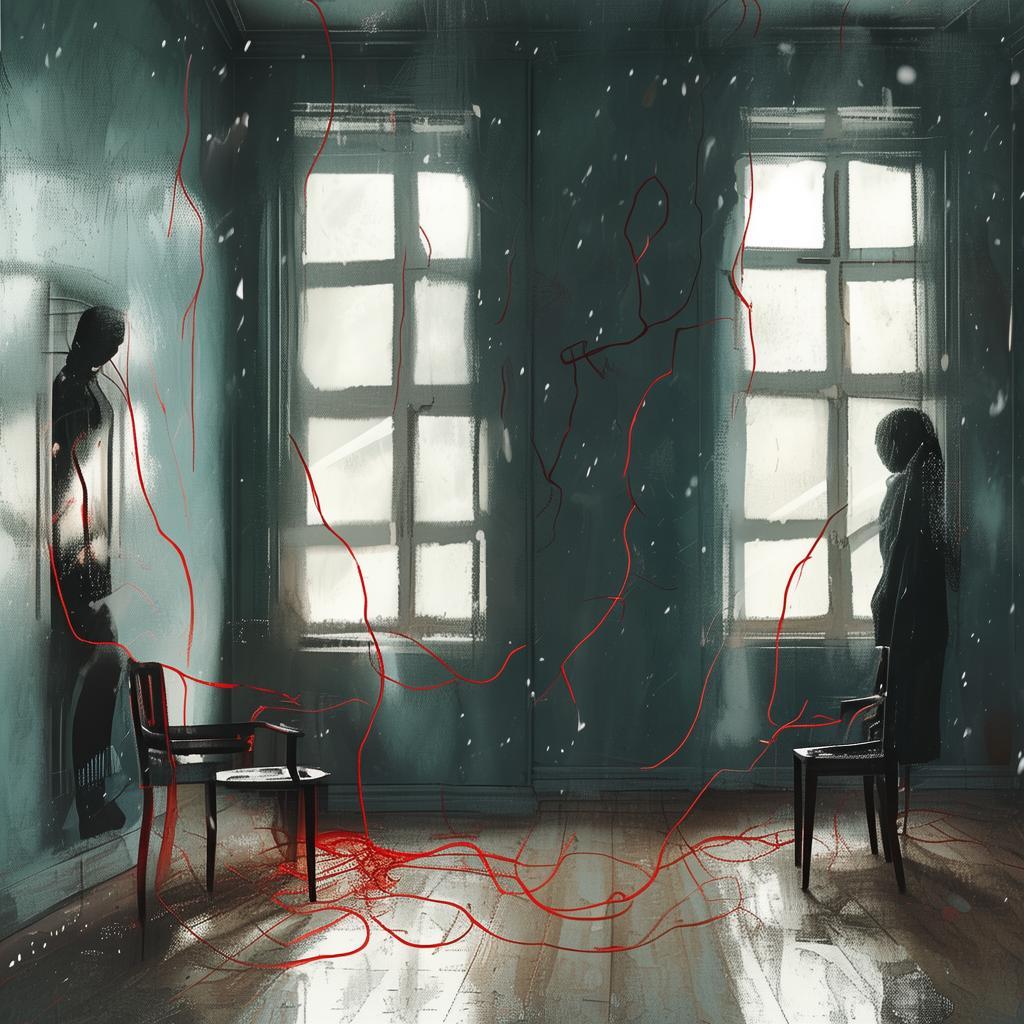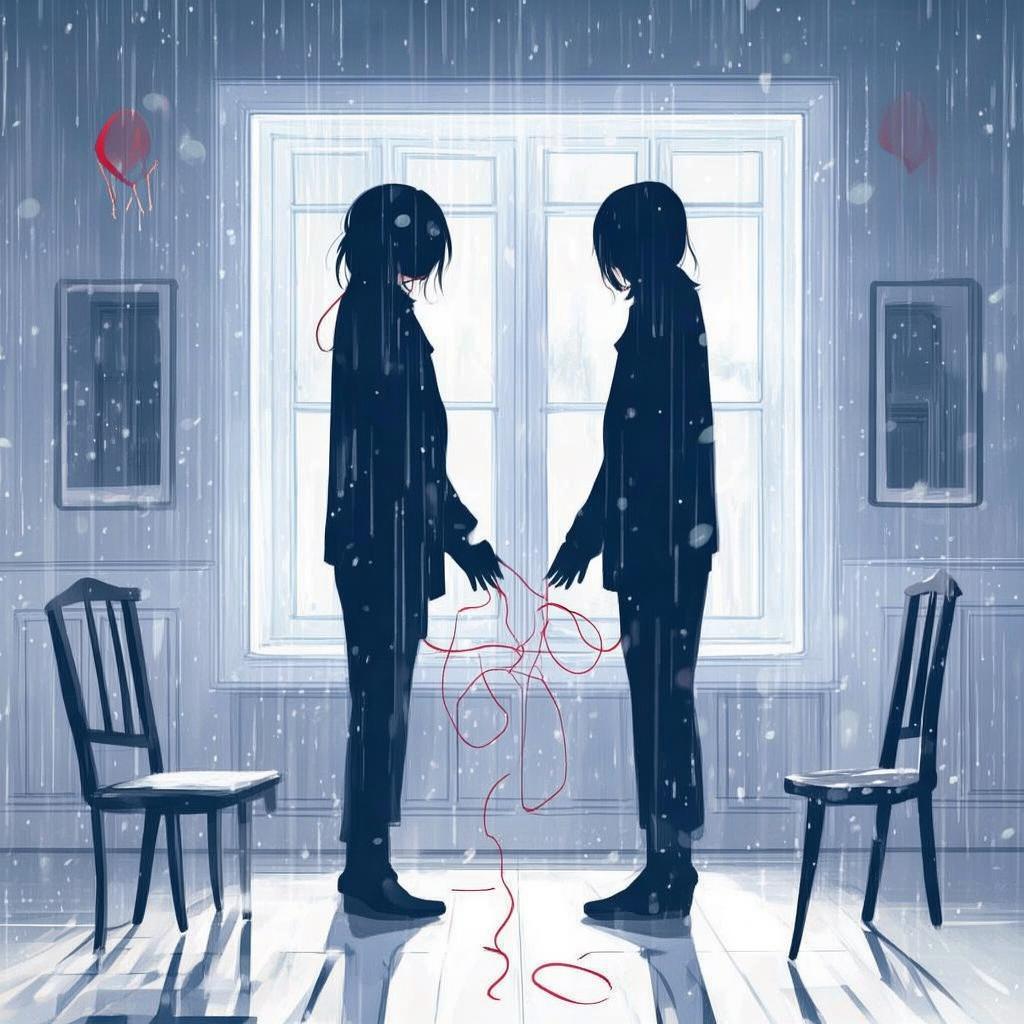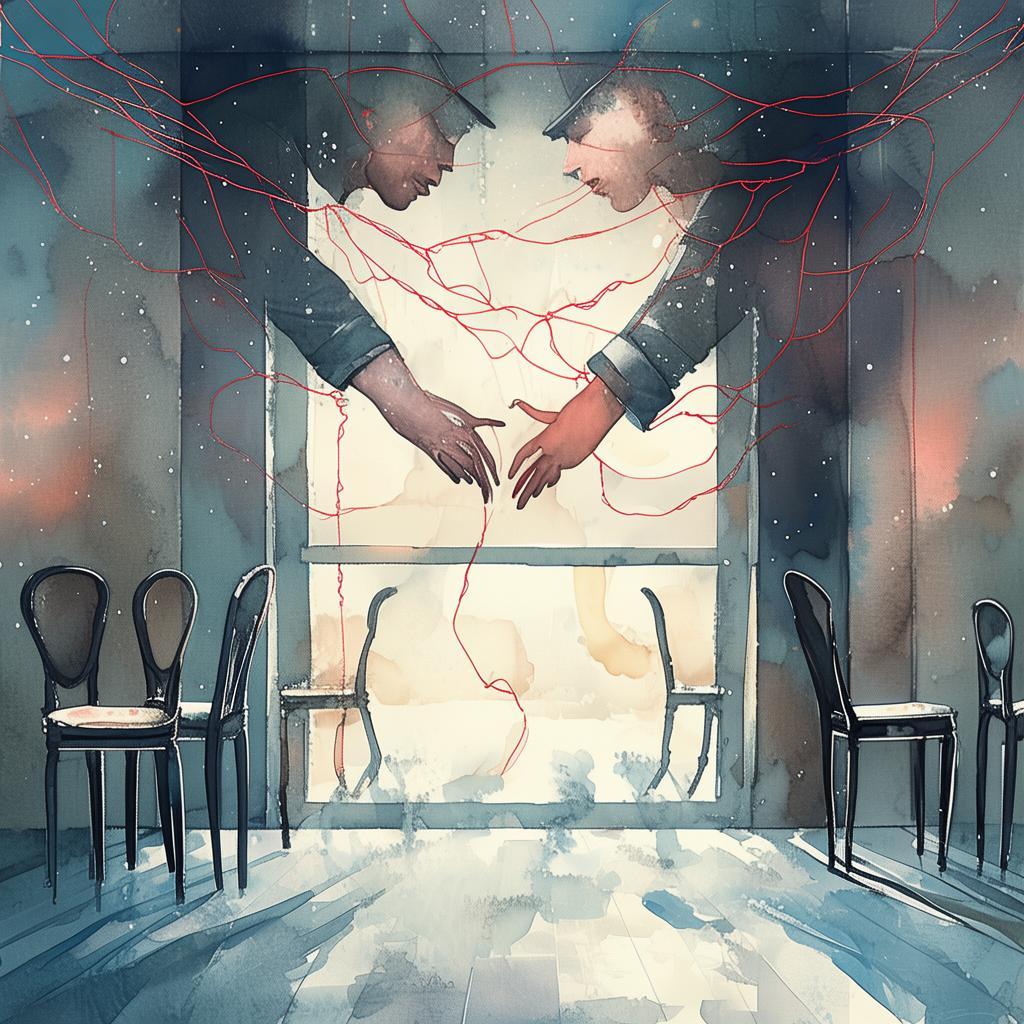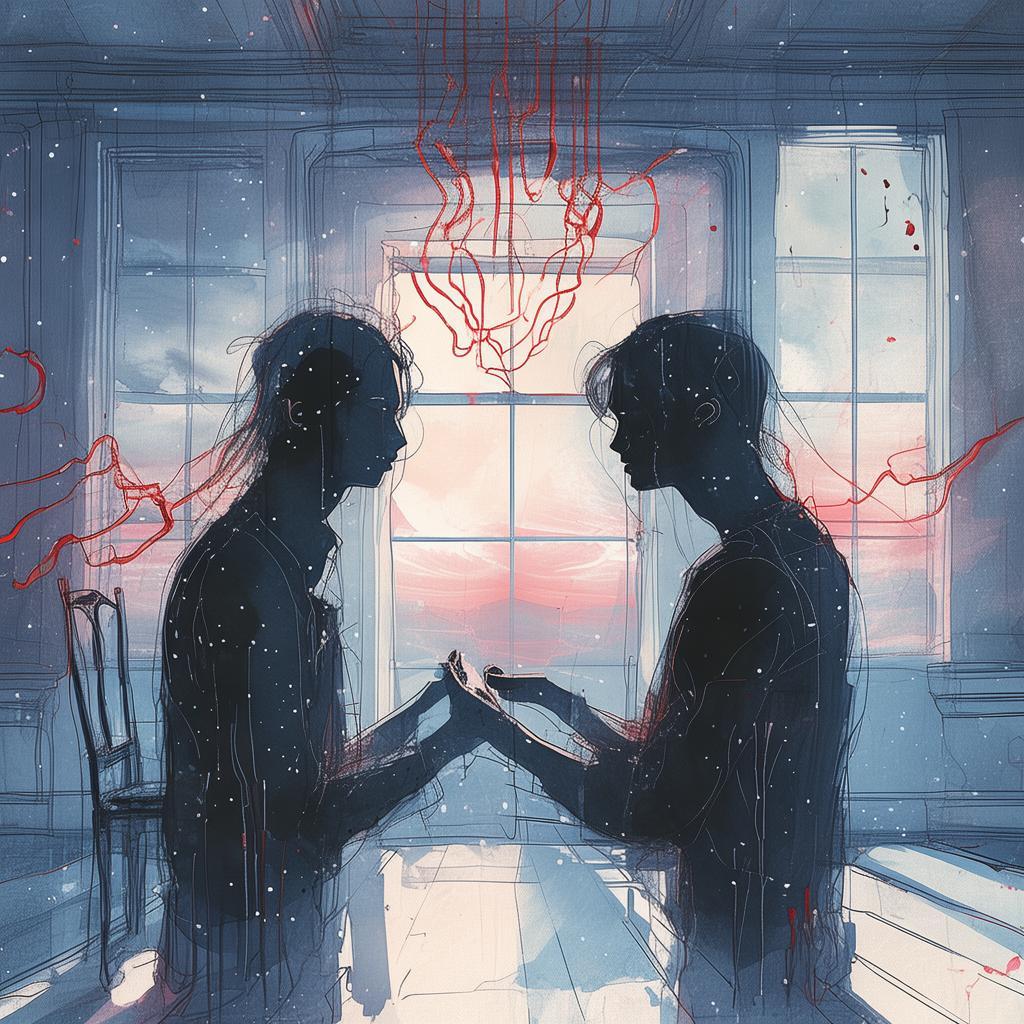Shadows of the Past: A Gay Anime's Journey to Wholeness
In the quiet town of Aoi City, nestled between mountains and the sea, there lived a young animator named Kaito. His father, Takumi, had been a legendary figure in the anime industry, his works celebrated for their emotional depth and intricate storytelling. Takumi had passed away suddenly a year ago, leaving behind a legacy that Kaito felt he had to live up to.
The house they lived in was filled with Takumi's old anime equipment, sketches, and the faint scent of coffee that seemed to linger in the air. Kaito spent his days in the attic, a space that Takumi had once called his sanctuary, surrounded by his father's unfinished projects. It was there that Kaito stumbled upon a particularly intriguing piece of work: a short anime about a love triangle between three characters.
The anime was titled "Shadows of the Past," and it told the story of two brothers, Kaito and Tsubasa, and their childhood friend, Akihiro. The narrative was riddled with secrets, misunderstandings, and unspoken truths that eventually led to a tragic ending. As Kaito watched the anime, he couldn't shake the feeling that he recognized the characters—perhaps in a more personal way than he had ever imagined.
Determined to uncover the truth behind "Shadows of the Past," Kaito began to piece together the story of his father's past. He discovered that Takumi had once been in a relationship with a man named Akihiro, and that Kaito was the product of an affair. The revelation was shattering, but it also sparked a desire to understand the complexities of his father's love life.
As Kaito delved deeper, he discovered that Akihiro had been the protagonist of "Shadows of the Past," and that the anime had been his father's attempt to process his own love triangle. The story was a reflection of his father's internal conflict, his struggle to balance his feelings for Kaito's mother and his love for Akihiro.

Kaito's journey became one of self-discovery. He began to confront his own feelings about his identity, his sexuality, and his place in the world. He realized that the anime had been a way for Takumi to come to terms with his own past, and that by understanding his father's story, he could also come to terms with his own.
The climax of Kaito's journey came when he met Akihiro, now a reclusive artist living in the same town. Akihiro was hesitant at first, but as they shared stories and emotions, a bond began to form. Kaito realized that the love triangle in the anime was not just a reflection of his father's life, but also a parallel to his own.
The ending of Kaito's journey was bittersweet. Akihiro, unable to reconcile his feelings for Takumi and his desire to live a life of his own, decided to leave Aoi City. Kaito understood his decision, even as it hurt him deeply. In the end, Kaito found solace in the fact that he had uncovered the truth about his father's life and his own identity.
As he stood on the hill overlooking the sea, Kaito felt a sense of peace. He realized that the past was a part of him, but it did not define him. He had learned to accept his father's legacy, his love for Akihiro, and his own journey towards self-acceptance.
Kaito's journey was one of healing, of understanding, and of love. Through the lens of his father's anime, he had found clarity, and with it, the courage to embrace his own story.
✨ Original Statement ✨
All articles published on this website (including but not limited to text, images, videos, and other content) are original or authorized for reposting and are protected by relevant laws. Without the explicit written permission of this website, no individual or organization may copy, modify, repost, or use the content for commercial purposes.
If you need to quote or cooperate, please contact this site for authorization. We reserve the right to pursue legal responsibility for any unauthorized use.
Hereby declared.









